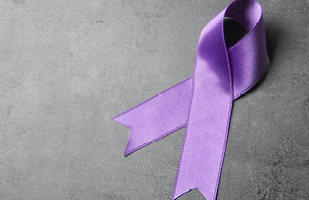Supreme Court Domestic Violence Program Offers Resources to Courts, Communities

The Supreme Court of Ohio Domestic Violence Program provides resources and training to courts, justice partners, and the public to improve the response to domestic violence situations.

The Supreme Court of Ohio Domestic Violence Program provides resources and training to courts, justice partners, and the public to improve the response to domestic violence situations.
October is Domestic Violence Awareness Month. In 2023, the Ohio Domestic Violence Network (ODVN) reported 78 victims died in one year from domestic violence incidents in the state. Thousands more survived their attacks. In 65% of the cases, there was prior contact with the criminal or civil justice systems.
The Supreme Court of Ohio Domestic Violence Program is dedicated to strengthening the response to domestic violence, stalking, and sexual assault by providing Ohio courts and justice system partners with the technical assistance and resources they need.
Whether it’s in criminal court, where perpetrators face charges, or in domestic relations or juvenile court where custody matters and protection orders are handled, domestic violence cases touch all parts of the judicial system.
One goal of the Domestic Violence Program is to provide multidisciplinary education to help courts better understand domestic violence dynamics and improve access for victims.
The DV Program has sponsored a series of webinars on cultural responsiveness, domestic violence, and the courts for justice partners. This month, there are four free domestic violence related webinars on topics such as post-separation lethality, the effect of domestic violence on children, understanding protection orders, and a case study of domestic violence incidents involving strangulation.
In November and December, the Program is hosting five regional domestic violence courses featuring national expert Mark Wynn. These courses can be accessed on OhioCourtEdu.
In addition, the Domestic Violence Program helped create information for courts about crime victim rights known as “Marsy’s Law,” and a form to help victims in gathering information to present at restitution hearings. To further improve access, the restitution form has been translated into six foreign languages.
When families with children are involved, not only might the victim have to track criminal court dates, but they may also have additional hearings in other courts over custody matters and protection orders.
“There are a lot of expectations on a domestic violence survivor,” said Children & Families Policy Counsel Anne Murray. They have work obligations, children needing care, and sometimes they face transportation issues, she said.
Murray explained that courts can help alleviate some of those stressors with communication and scheduling practices.
Another aim of the Domestic Violence Program is stopping future generations of families from experiencing domestic violence. Studies show children who grow up with domestic violence in the home experience a host of adverse physical and mental health problems, as well as potentially continuing the cycle by becoming victims or aggressors.
“If improved court response can perhaps reduce violence in a home and improve the future for the children in that home, then it’s a real success,” said Murray.
One way of achieving this goal is looking at perpetrators individually to address the root causes of their behavior. This approach is reflected in several specialized dockets throughout the state focusing on cases involving both drug abuse and domestic violence.
The Summit County Domestic Violence Intervention Court works with violent offenders who have been clinically diagnosed with mental health and addiction problems.
According to Program Coordinator Christina Claar, the specialized docket is organized in three phases. The first helps to stabilize the participant by identifying their needs and establishing housing, work, and substance abuse treatment.
The next phase focuses on domestic violence issues, including betterers intervention, cognitive behavioral groups, and utilizing tools available to the participants. A final maintenance phase reinforces what participants learn throughout the two-to-three-year program.
Instead of sending an offender to prison, the program focuses on treating the root problems so offenders can return to their families with the knowledge and resources needed to stop their violent and addictive behaviors.
“Ultimately, the goal is to stop the cycle altogether,” said Claar. “We do this job to make a difference and hope every day that we can.”
For those not directly involved in the court system, resources are available to help educate neighbors, friends, colleagues, and family members about the signs of domestic violence to watch for and how to help someone in need.
“The best we can do is listen, ask questions in the right way, and offer resources when we can,” said Murray.
The Domestic Violence Program disseminates information, monitors trends, offers education, and recommends forms, rules, and standards that promote effective responses to these cases.
These resources are available on the Supreme Court’s Domestic Violence Program webpage.


